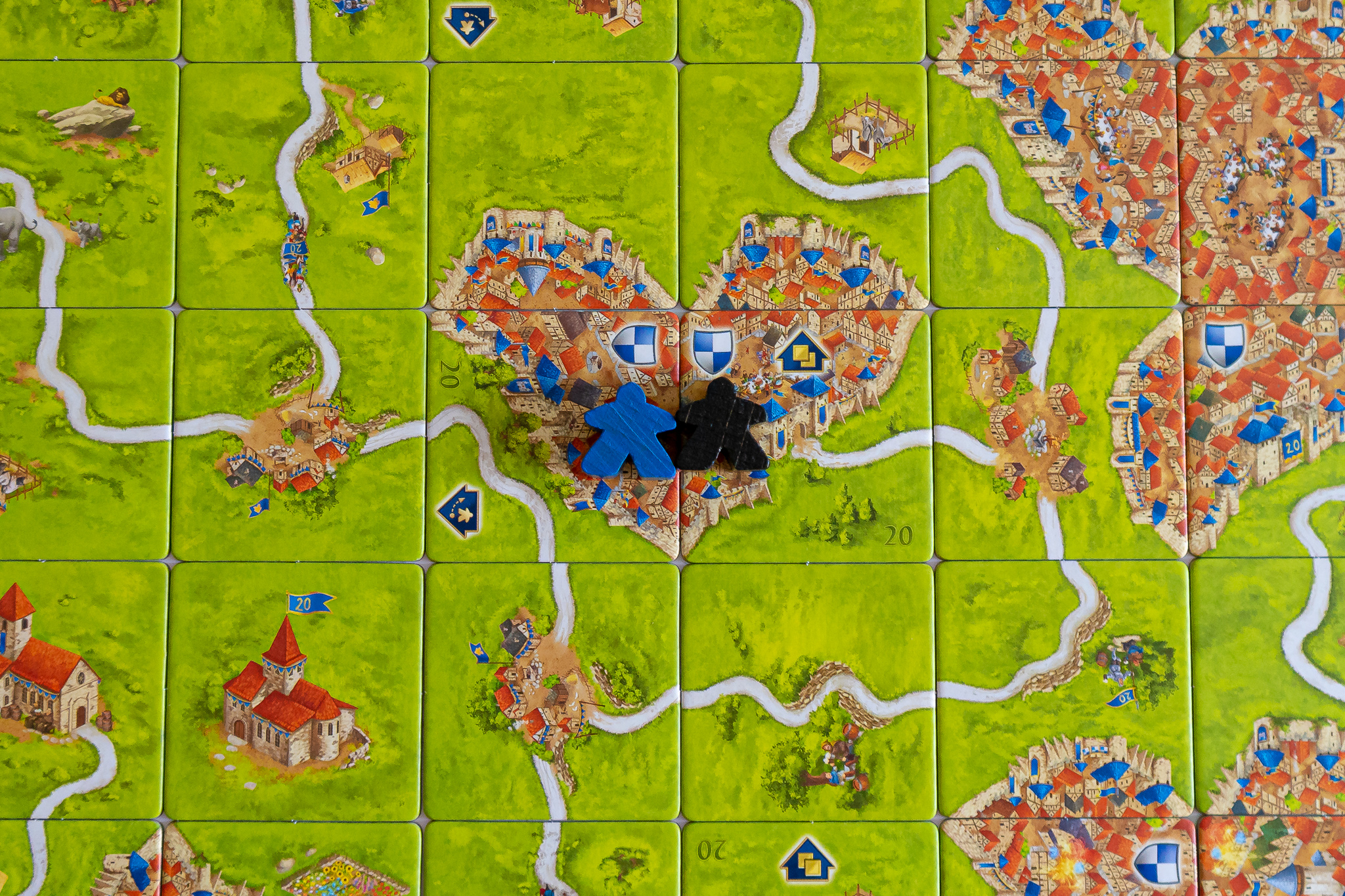Intro
The french city of Carcassonne. A board game released the year 2000, was the first game we ever played together which also happens to be on the first date we ever had.
Since then we have played Carcassonne every year on this date and eaten homemade pizza.
Theme and Components
To this game there aren’t that many components. You have your classic meeples and abbotts out of wood, in the five colors; black, blue, green, yellow and red.
In the 20th anniversary expansion you also get some stickers that you can put on your meeples, so that they get a little more personality.
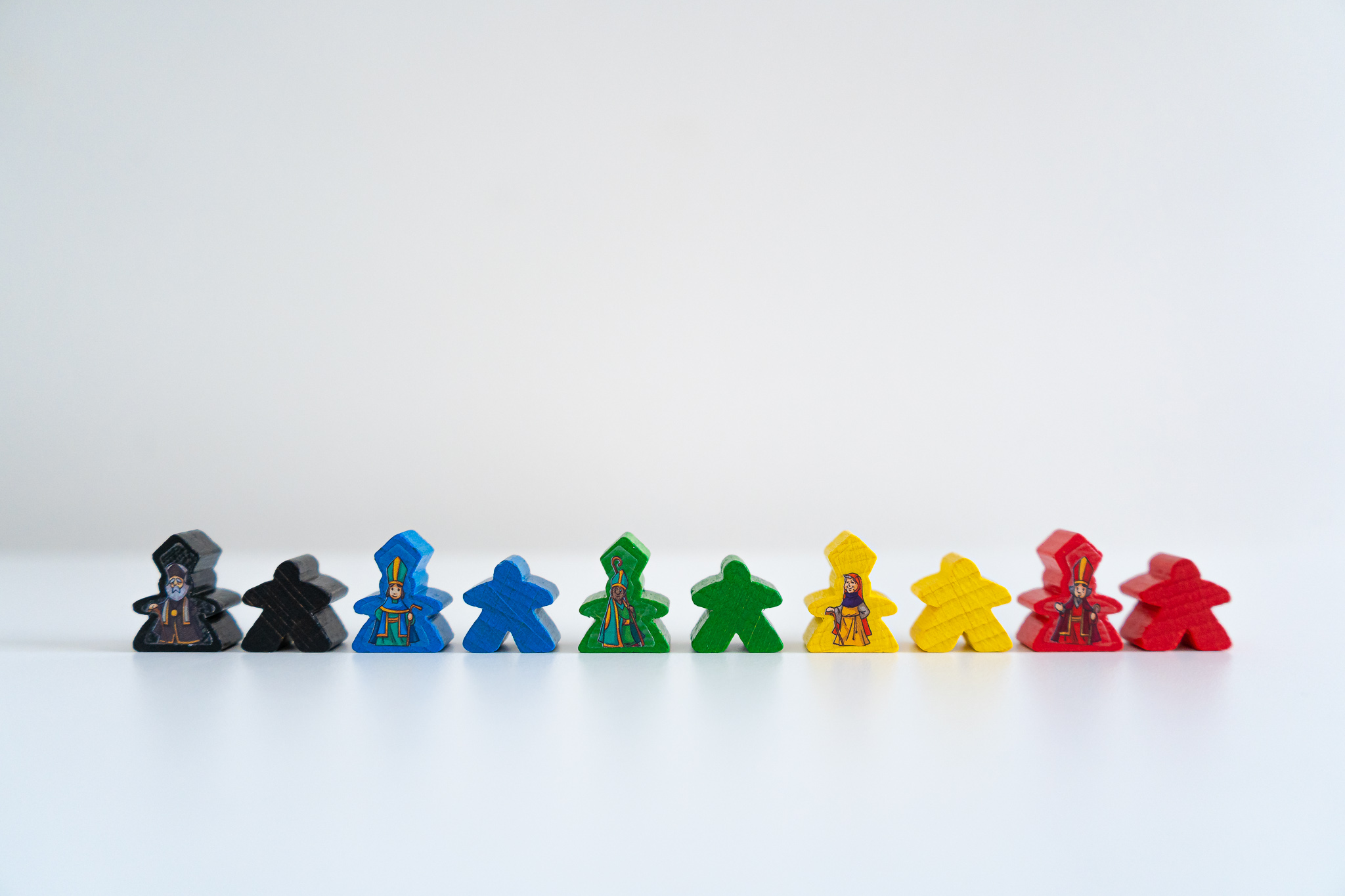
In the game you also get the different tiles; which consists of rivers, cities, roads, cloisters, gardens and grasslands.
In the 20th anniversary expansion you get a new mini-expansion with 15 new tiles and 5 new river tiles.
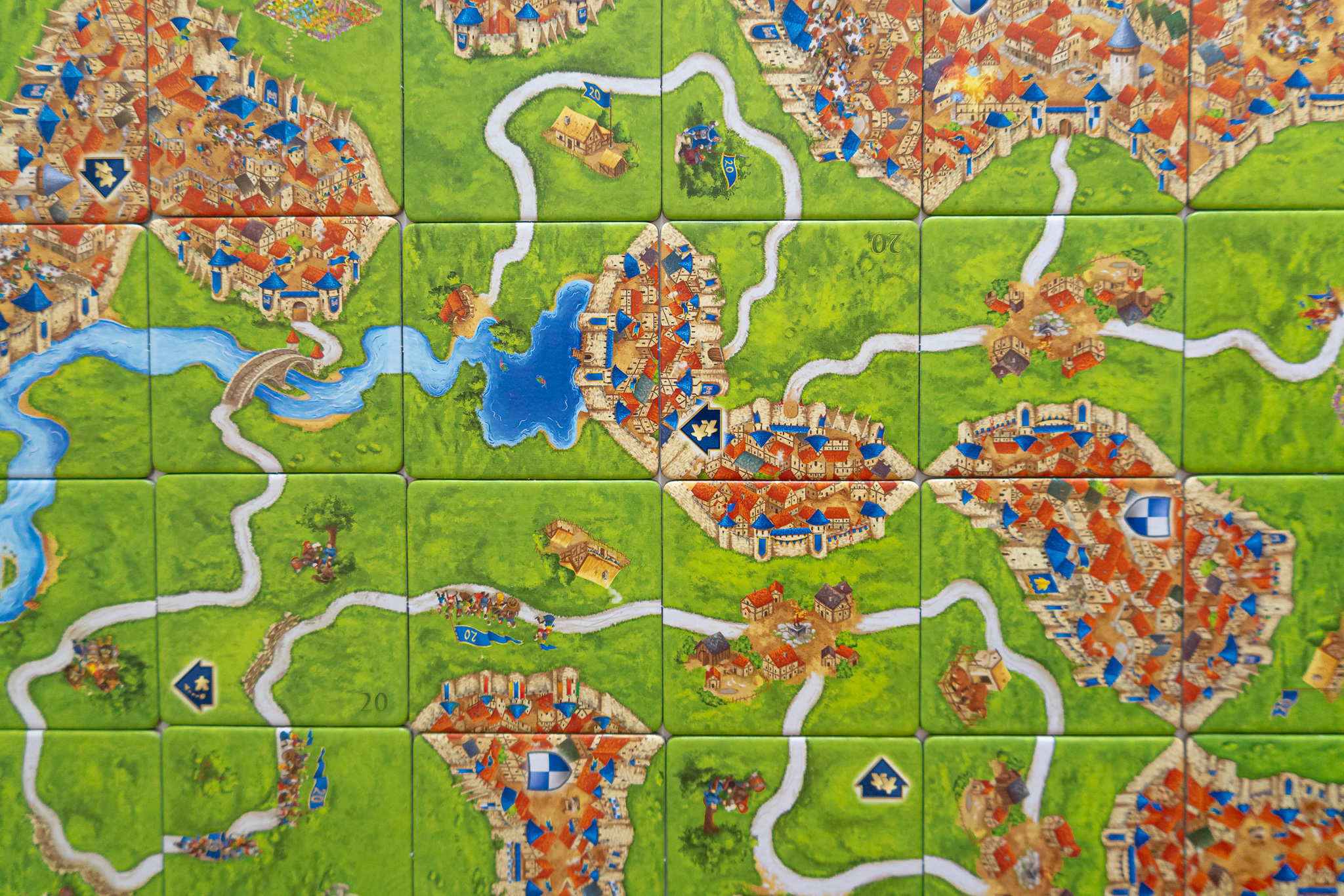
Included is also the thematic scoreboard to keep track of who is winning
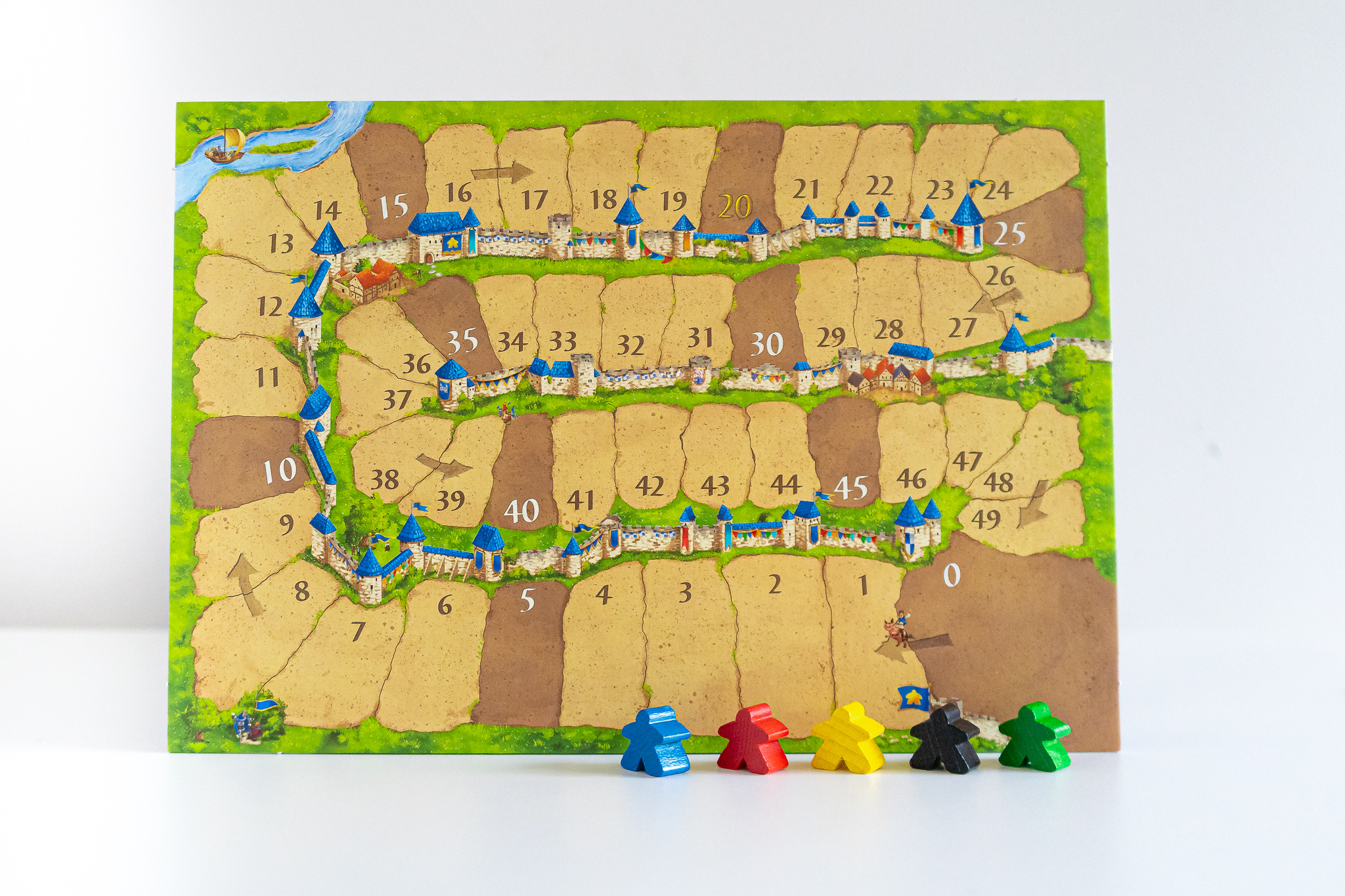
Gameplay
Carcassonne has a few core rules to keep track of. The first one is that the image must always fit together. This means that you can’t go placing a green field in the middle of a city or have a road led straight into a city wall.
Second you can only place a meeple on the tile you just placed and lastly you are not allowed to place a meeple on an element already owned. The first rule is immutable, while special abilities might allow you to break the other two from time to time.
At the start of the game you place the large river tile on the board, this is the starting tile. The youngest player then starts by drawing from the pile of river tiles and placing them on a side of their choosing. Players are free to claim elements on these tiles if they want to, the last two tiles will be the lakes. When all the river tiles are placed you start with the normal piles which represent the majority of tiles.
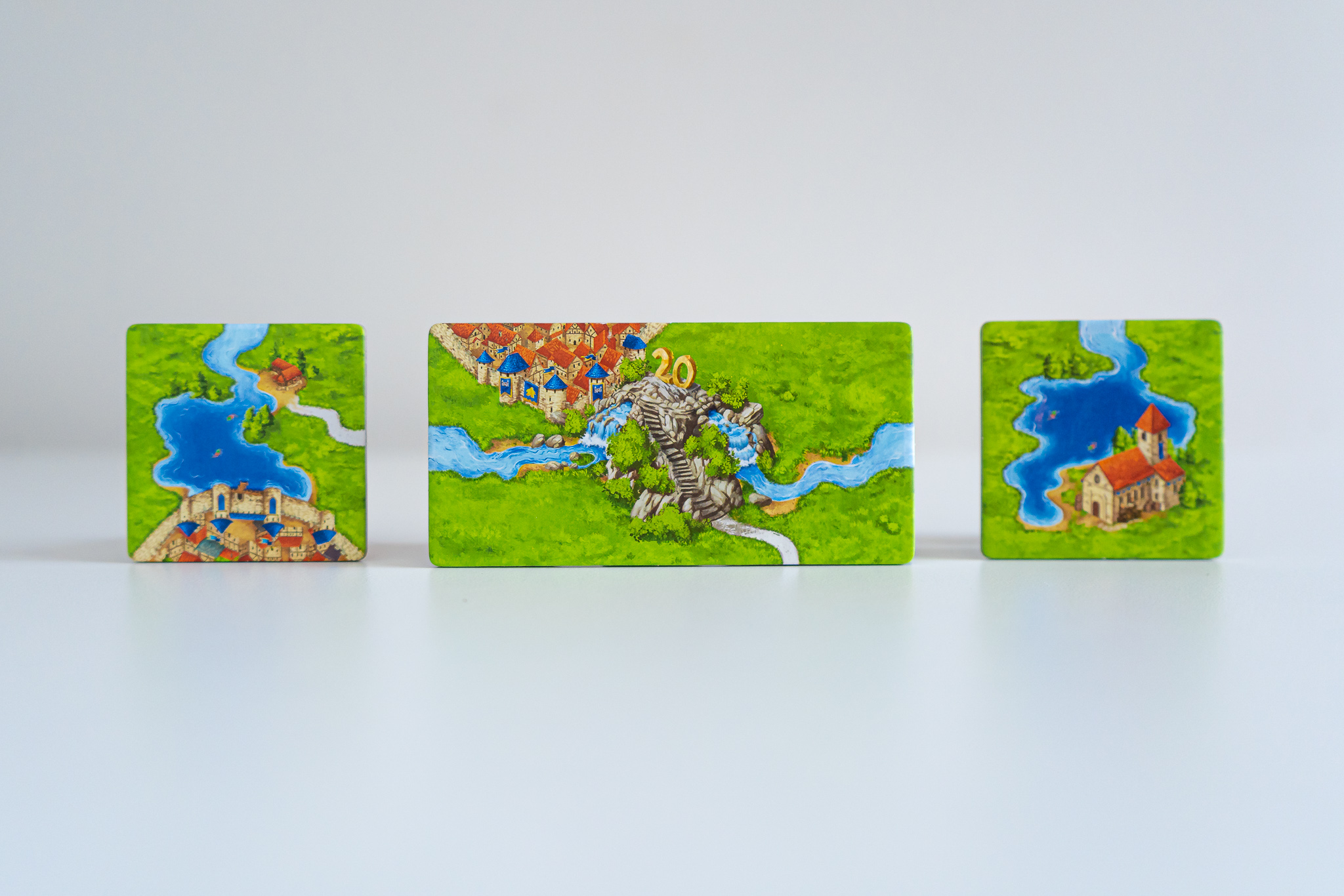
From this point on the game follows a three phase structure. Phase 1, draw and place a tile. Phase 2, claims an element on that tile if you want to and have free meeples. Phase 3, count points for finished elements and reclaimed those meeples. Points are kept track of by moving your meeple on the scoreboard.
The arrow icon is the new feature introduced with the 20 year anniversary edition.These icons give you the ability when activated to either place a meeple on an already owned element, get another turn or place a meeple on an unfinished and unoccupied element. But this is only if you choose to activate them by pointing the arrow towards another tile that is next to it. If you point the arrow towards an empty space you instead get 2 points but leave the ability for someone else to activate by placing a tile where the arrow is pointing.
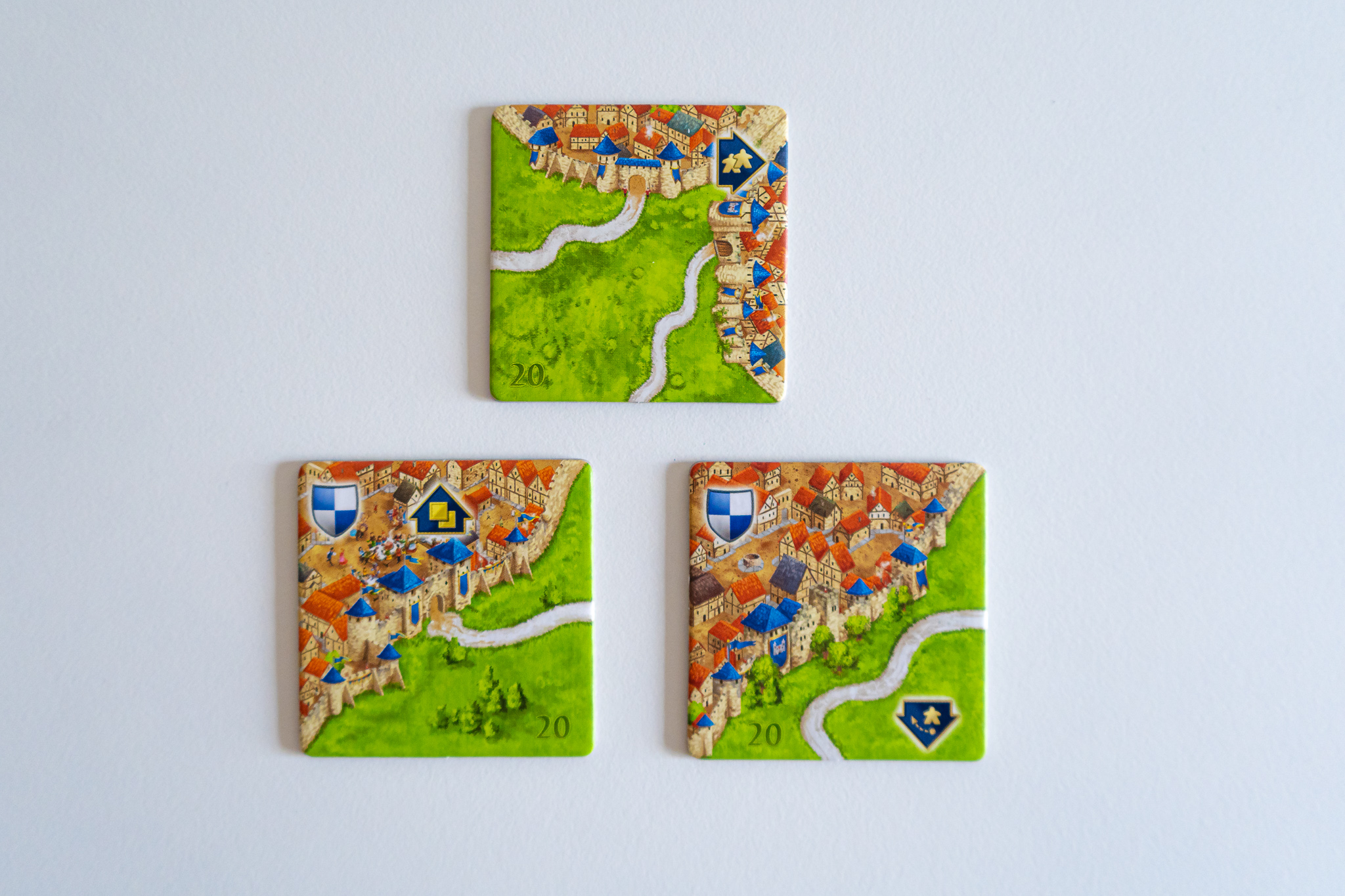
Different elements have different ways of scoring when completed. A road gives you 1 points per tile, both if it is uncompleted at the end of the game or completed during the course of the game.
A city tile gives you 1 point if uncompleted and 2 points if the whole city is completed. If it in addition has a shield icon it it it’s 1 additional point if uncompleted and and additional 2 if completed. In a finished city, a tile with a shield grants you 4 points. The cloisters and gardens give you 1 point for each tile surrounding it including itself, hence 9 points is the maximum you can earn here. The last means of scoring points is placing a farmer which is done by placing a meeple laying down on a grassland. A farmer gains 3 points for each completed city on his land.
Nathalies thoughts
One thing I like about Carcassonne is that it has something for everyone. If you aren’t an experienced player or aren’t that interested in games, you can always try to create a nice picture of the different tiles. If you’ve more experience of games and played a few, Carcassonne gives you options to play more strategically for example with farmers or taking over your opponents territory.
I love the new tiles that came with the 20th anniversary, especially the new river tiles. It gives you a larger variation to the start of the game, with the river going two ways instead of one. The other tiles that are in the new expansion are also a warm welcome to the base game. The ones I like the most are the “take another turn” and “place a meeple where you already have one”. Who doesn’t like to take another turn? And place another meeple is reaaaally nice when someone tries to take part/over your city.
Carcassonne is a classic for a reason! And with the new expansions it gives a nice new flavor to it!
Fredriks thoughts
Carcassonne is a game I have had in my collection for many years and it continues to earn that place time and time again. It’s a nice game to use as a gateway to introduce people to board gaming. Or bust out a few expansions if you want to ramp up the complexity a little and increase the game length. It’s also one of the few games I know of that basically feels the same if you are 2 or 5 people that are playing it minus the waiting time.
Playing it as a couple is excellent since you can really shift between the competition or just having a relaxing game and see what happens with the image this time around. Also it's very funny to take over your SO’s elements ;)
If you already have a copy of the Carcassonne base game I think this edition is only worth it if you play a lot and really want those new tiles to spice things up. But if you don’t own it yet this is an excellent edition to start with.
Conclusion playing “Carcassonne” as a couple
Carcassonne has brought us countless sessions of fun both for just the two of us and when we have brought it along to introduce friends and family to it. We gifted it to Fredriks parents and they have had a session every day for half a year now just the two of them.
Can we really give it anything other than the warmest of recommendations? It started at the first date and now we have a blog about couples boardgaming 5 years later.
